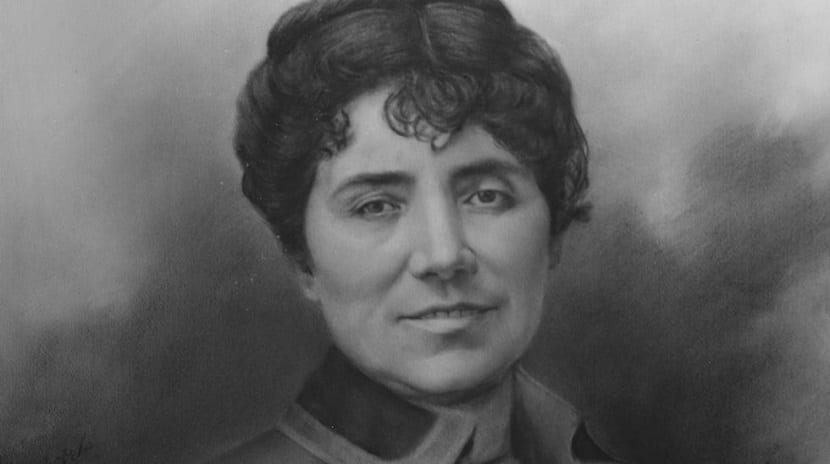
Rosalia de Castro was born in Santiago de Compostela in 1837 and together with the Sevillian poet Gustavo Adolfo Bécquer, he forms that couple who gave a new impulse and respite to the stage of Spanish Romanticism. In this special article dedicated to her, we delve not only into her life, unfortunately quite short, but also into her literary work, which is much more complete than a priori is disclosed, for example in Spanish schools, where its importance is hardly mentioned in the literature of our country, and if it is, only its poetic compositions referring to Romanticism are attributed to it.
In this article, we are going to remove this thorn and we are going to give her place to this great Galician writer ... We hope we will not leave anything in the pipeline, and transmit you to Rosalía de Castro in its entirety and in all its essence.
Life
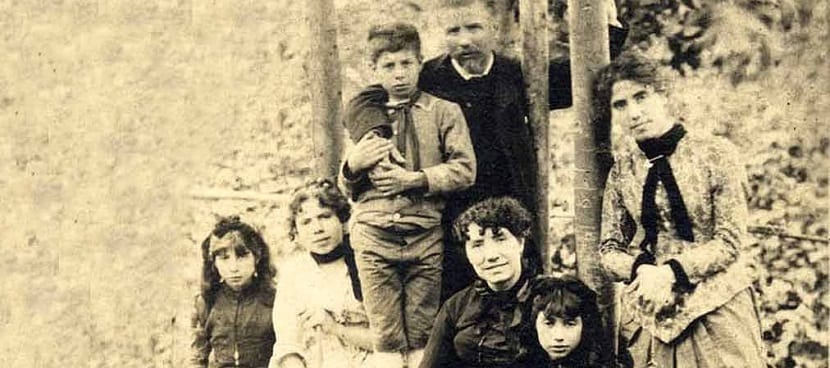
Rosalía de Castro was daughter of a single woman and of a young man who was made priest. Your condition of illegitimate daughter led her to be registered as the daughter of unknown parents, as follows:
On February twenty-four of one thousand eight hundred and thirty-six, María Francisca Martínez, a neighbor of San Juan del Campo, was godmother of a girl that I solemnly baptized and put the holy oils, calling her María Rosalía Rita, daughter of unknown parents, whose girl The godmother took, and she goes without a number for not having passed to the Inclusa; And for the record, I sign it. Certificate of the baptism signed by the priest José Vicente Varela y Montero.
Having grown up like this will also strongly condition his personality and, therefore, his life and literary work. Even so, we know the names of the parents: María Teresa de la Cruz de Castro y Abadía and José Martínez Viojo. Although the person who took care of the newborn at first was her godmother and mother's servant, María Francisca Martínez, part of her childhood would be spent with her father's family, in the town of Ortoño, to later move to Santiago de Compostela, where in the company of his mother, he began to receive basic notions of drawing and music, regularly attending cultural activities in which he would interact with part of the Galician intellectual youth of the moment, like Eduardo Pondal and Aurelio Aguirre. Although we only know from his school years that he began to write poetry from a very young age, we also know his taste for theatrical works, in which he actively participated during his childhood and adolescence.
On one of his trips to the Spanish capital, Madrid, meet who her husband was, Manuel Murguía, Galician author and prominent figure of the 'Reburning'. Rosalía published a booklet of poetry written in Spanish, which she called «The flower", and echoed by Manuel Murguía, who made reference to him in Iberia. Thanks to a mutual friend, the two met over time, to finally marry in the year 1858, specifically on October 10, in the parish church of San Ildefonso. They had 7 children.
Although some literary critics affirm that Rosalía did not have what is said to be a happy marriage precisely although she loved her husband very much, it is known for sure that Manuel Murguía helped her a lot in her literary career, until the publication of the work was possible. most famous of the Galician «Galician Songs», being the maximum responsible after the author herself, of course, that this work is known today and has supposed the resurgence of Galician literature in the nineteenth century.
If in itself, writing was difficult for women during that time, let's not even talk about how complicated it was to do it in Galician and have them read to you. The Galician language was very discredited, increasingly distant from that time in which it had been the pre-established language of the creation of Galician-Portuguese lyric. You had to start from the beginning, from scratch, since all tradition had been lost. It was necessary to break with the indifference and contempt that was had towards the language, but very few were those who considered the task, because this would constitute a reason for social discredit and did not carry at all the importance of if you did it in Castilian. Thus, Rosalía de Castro gave prestige to the Galician when using it as a tongue for «Galician songs», thus consolidating the cultural resurgence of the Galician language.
During your marriage, Rosalía and Manuel changed their address on many occasions: they passed through Andalusia, Extremadura, Levante and finally, through Castile, before returning to Galicia, where the author remained until the day of her death. It is believed that this coming and going from one place to another, mainly for work and economic reasons, was what led to Rosalía being constantly pessimistic. Finally, died in 1885 due to a uterine cancer that she had been suffering from long before 1883. At first, she was buried in the Adina cemetery, located in Iria Flavia, to later exhume her body on May 15, 1891 to be taken to Santiago de Compostela, where she was again buried in the mausoleum created specifically for her by the sculptor Jesús Landeira, located in the Chapel of the Visitation of the Santo Domingo de Bonaval Convent, in the present Pantheon of Illustrious Galicians. A place, much better without a doubt, for a Galician woman who gave everything for her land.
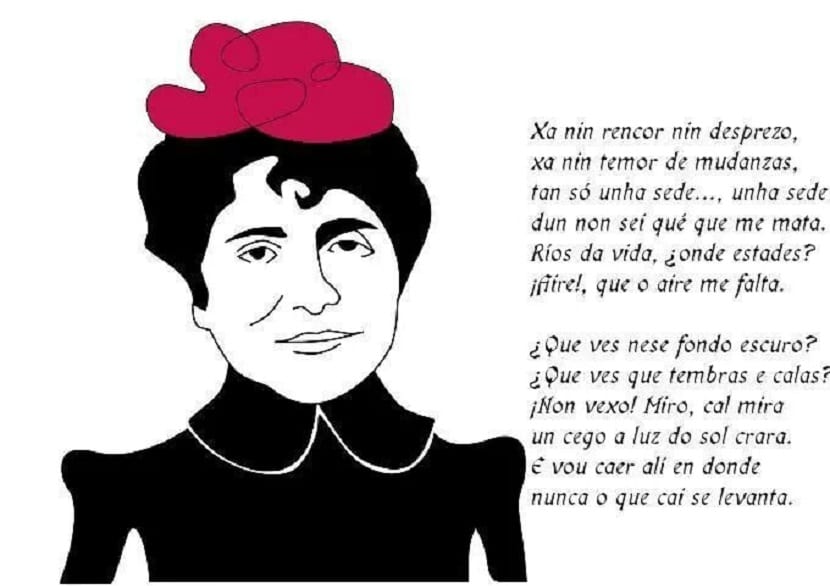
Construction
His work, like that of Gustavo Adolfo Becquer, is part of the intimate poetry from the second half of the XNUMXth century, which is characterized above all by a simple and direct tone that gives a new, more sincere and authentic breath to the movement of Spanish Romanticism.
His literary work is known above all for its poetic composition, which is made up of 3 published works: Galician songs, You fuck novas y On the banks of the Sar. The first two books were written in Galician, and "On the banks of the Sar", her poetic work in Spanish, presents an expression that revolves around the personal feelings and internal conflicts that we mentioned above, of the author: loneliness, pain and a deep nostalgia for the past time are the most important consequences of the contact of the poetic voice with the places of his youth.
Also in the work "On the banks of the Sar", some of the motifs that were already in his previous production in Galician appear: "the shadows", the presence of deceased beings, or "the sad ones", individuals predestined to pain and haunted by misfortune. Precisely, the incomprehensible human suffering, before which his conscience rebels, sometimes faces its own religiosity.
Rosalía de Castro cultivates a poetry that considers the meaning of life from a lonely and desolate vision of the world. This perspective advances the existential character that is perceived in some authors such as Antonio Machado o Miguel de Unamuno. It is in this way also, as its confessional tone, the creation of new stanzas or the use of the Alexandrian verse (a verse of fourteen metric syllables composed of two hemistichs of seven syllables with an accent on the sixth and thirteenth syllable) prelude the formal tendencies of the modernist poetry.
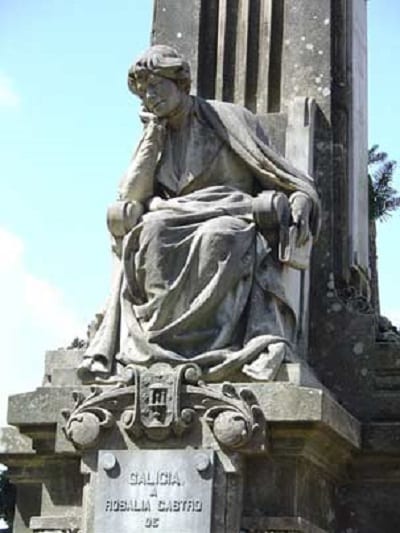
«Galician songs»
Su best known work, published in 1863, is written in his native language, Galician, to denounce the injustice that is committed against the people and Galician culture in general.
This book of 36 poems, including the prologue and epilogue, begins with the voice of a young woman who is invited to sing, apologizing, also in the last poem, for her poor ability to sing about Galicia and its beauty. Rosalía appears in them as one more character, thus making clear her passion for said Galician community.
In the Galician Songs, 4 different themes are clearly distinguished:
- Love theme: Different characters of the town in different circumstances and situations, live love in different ways, according to a popular perspective.
- Nationalist theme: In these poems the pride of the Galician people is vindicated, the exploitation of its inhabitants in foreign lands due to emigration is criticized and finally, the abandonment to which Galicia is exposed is protested.
- Costumbrista theme: description and narration predominate to present beliefs, pilgrimages, devotions or characters characteristic of Galician popular culture.
- Intimate theme: It is the author herself, Rosalía, who expresses her feelings in some poems.
In "Cantares gallegos" as well as in "Follas novas", the writer recovered many elements of popular poetry and Galician folklore that had been forgotten for centuries. Rosalía sings of the beauty of Galicia in her poems and also attacks those who attack her people. He is in favor of the peasantry and the working class and continually laments poverty, emigration and the problems that this entails. This example from this book of poems reflects the pain of the emigrant who says goodbye to his land:
Goodbye glory! Goodbye happy!
I leave the house where I was born
I leave the village that I know
for a world that I did not see.
I leave friends for strangers
I leave the valley for the sea,
I finally leave how much good I want ...
Who could not leave! ...
«New fucks»
This was the last book of poetry that the author wrote in Galician, published in 1880. This collection of poems is divided into five parts: Wander, Intimate do, Varies, Da terra e As you lived two alive and as you lived two dead, and his poems belong to the time in which he lived with the Simancas family.
In these poems, Rosalía condemns the marginalization of women at that time and also deals with the passage of time, death, the past as a better time, etc.
As a curious fact, we will say that in her preamble, the author made clear her intention not to write in Galician again with these lines:
«Alá go, pois, as Follas novas, how nice they would call themselves vellas, because or they are, and last, because paid by the debt in which it seemed to me to be coa miña terra, it is difficult for him to write more verses in the mother tongue».
Translated, it says the following: "There go, then, the new pages, which would better be called old, because they are, and last, because the debt in which I seemed to be with my land already paid, it is difficult for me to write more verses in the mother tongue" .
Prose
And although in the schools they let us know a Rosalía that was not very remarkable in her time and only a poet, the truth is that she also wrote prose. Next, we leave you with the most notable ones:
- "The daughter of the sea" (1859): Dedicated entirely to her husband Manuel Murguía. Its argument is as follows: Through the life events of Esperanza, the girl rescued from the waters in strange circumstances, Teresa, Candora, Angela, Fausto and the depraved Ansot, we enter a Rosalian universe full of shadows, melancholy and heartbreak. The coexistence of the real and the mysterious, the pessimistic conception of life, the supremacy of pain over happiness in human existence, extreme sensitivity towards the landscape, the defense of the weakest, the vindication of the dignity of women , the lament for the orphans and abandoned ... are recurring motifs in the author's work that we discover already in her literary beginnings, of which this title is a good example. Rosalía is not only that melancholic voice from a world of mists and homesickness that has been shaping popular tradition over time, but an energetic and committed writer who, already in her first foray into narrative, announces the spirit of a genius singular, of a woman ahead of her time who, like her protagonists, knew how to contemplate the world with the eyes of a special sensitivity. You can read his work for free in this link.
- "Flavio" (1861): Rosalía defines this work as a "novel essay" since what she narrates in it are her own young years. In this work the theme of love disappointment appears recurrently.
- "The gentleman in the blue boots" (1867): According to Rosalía de Castro herself, this work is a kind of "strange story" full of satirical fantasy, which creates an assortment of lyrical-fantastic stories with traditional traits that aims to satirize both hypocrisy and the ignorance of Madrid society. Despite its rarities, it is considered by literary critics the most interesting prose work of the Galician author.
- «Galician story» (1864), written in Galician language.
- "The literats" (1866)
- «The Cadiceño» (1886)
- "Ruins" (1866)
- "The first madman" (1881)
- "Palm Sunday" (1881)
- "Padrón and the floods" (1881)
- «Galician customs» (1881)
The name of Rosalía de Castro today
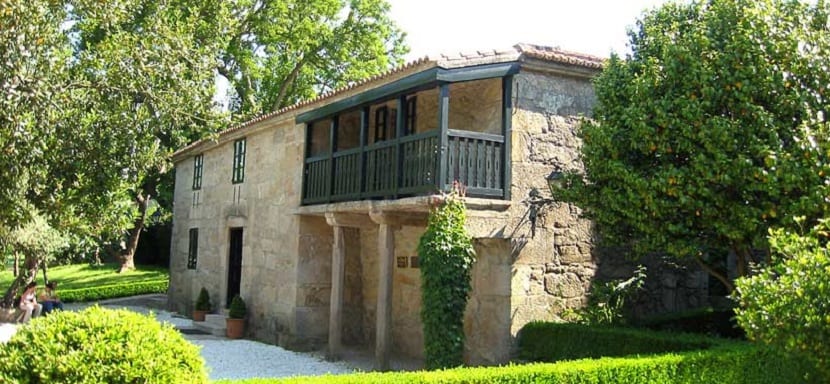
Today, there are many places, tributes and public spaces that remember the name of Rosalía de Castro, due to the importance that this had in the resurgence of the Galician language in our country. To name just a few:
- Schools and in the communities of Madrid, Andalusia, Galicia, as in other regions of Spain, as well as abroad. Sites with the name of the Galician writer have been found in Russia, Uruguay and Venezuela.
- Squares, parks, libraries, streets, etc.
- Un wine with denomination of origin Rías Baixas.
- Un plane of the airline Iberia.
- Una aircraft of maritime rescue.
- Commemorative plaques, sculptures, portraits, poetry awards, paintings, bills Spanish, etc.
And as you know it has been a regular in my articles, I leave you with a video report about the author, about 50 minutes, who talks about both her life and her work. Very complete and entertaining. I also leave you a couple of quotes that I particularly love:
- About the dreams that feed the soul: «He is happy who, dreaming, dies. Wretch who dies without dreaming".
- About youth and immortality: "The youthful blood boils, the heart is exalted full of breath, and boldly the mad thought dreams and believes that man is, like the gods, immortal."
Great